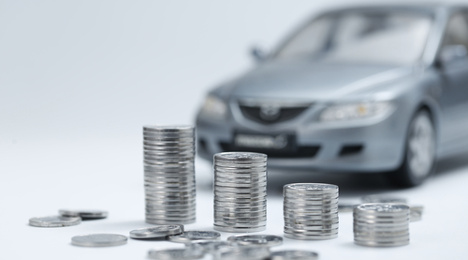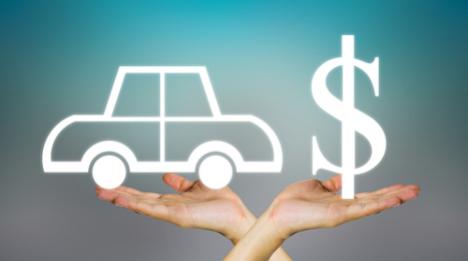Consumers' increased interest in both trucks and SUV’s over sedans is a shift the industry will have to wrestle with even more this year, says John Rickel, senior vice president and chief financial officer of Group 1 Automotive.
“The overall industry, if you go back two years ago, had a 50/50 split between cars and trucks. Last year it got to 60/40 and this year could be 65/35 — that is a massive, massive shift in consumer preference,” Rickel said during Group 1’s presentation at the Bank of America Merrill Lynch 2017 Auto Summit in New York last week, a webcast of which Auto Remarketing viewed.
“Trucks and SUV’s are continuing to go from strength to strength. There’s a lot of customer demand there.”
He points to lower and affordable gas prices as the primary driver of the shift.
“If you can have the optionality of a bigger package — basically what a truck or SUV offers of you — most consumers are opting for that and the industry is struggling to catch up with that switch,” he said.
Used-car sourcing
During the presentation, Rickel said his group’s top source for used-cars are customers’ trade-ins.
“When we’re under pressure on the new vehicle sales, we’re not selling as many units — we’re not getting as many trades, and we have to go out to auction to supplement,” he said.
One downside, Rickel said, is that going to the auction to buy inventory can be more costly over time, after factoring in all of the added expenditures dealers incur.
“You’re going to pay a little bit more, you’re bidding against other dealers, you pay an auction fee and you’ve got transportation costs,” he said.
Residual trends in segments
In regards to sedans, within the used-car market in particular, there’s currently some pressure on residuals, according to Rickel.
“A lot of leases were written three years ago and that’s were a lot of volume is coming back,” he said. “We’re seeing a number of our OEM partners that have had to warn on residuals. You’re seeing them pull back somewhat on leasing.”
Rickel said he isn’t too strained about the residual values of trucks and SUVs.
Compared to sedans, trucks have a longer life and a number of consumers of have second order uses for them, he said.
In his 30 years of experience and the lease cycle he has seen, it has been rare that “you get a big, big falloff in truck residuals, so I’m less concerned about that,” Rickel said.
Specifically, if the rebound of the housing industry continues, he said it’s likely that construction workers use of trucks will increasingly secure their current standing in the market.
Rickel also added that if an infrastructure program comes from the Trump administration, it will presumably solidify truck sales as well.
Pre-owned Tesla Model S vehicles sell notably faster than some of its U.S. counterparts’ best-selling used models, according to Autolist.
The firm recently released a study that delved into used Tesla vehicles’ overall market performance relative to those of General Motors and Ford.
The pre-owned Model S averages 87 days on market, 5 percent below its peer group, reports the buyer intelligence firm’s study titled, Changing of the Guard: Tesla vs GM & Ford. That peer group includes the Audi A7, Porsche Panamera, BMW 6 Series, Mercedes-Benz CLS, and Lexus LS 460.
The top used models from GM and Ford — the Ford F-150, Chevrolet Silverado 1500, Chevrolet Malibu and Ford Fusion — spent between 88 days and 104 days on the market.
Additionally, the Model S also has higher pre-owned prices relative to expectations than top-performing GM and Ford vehicles.
Prices of the Model S have trended between 3 percent and 5 percent above expectations for the past year.
Meanwhile, prices for the top-performing used GM and Ford models have trended within 1 percent (above or below) expectations throughout the past year,
To compile this study, Autolist’s analysts took a look at more than 10 million vehicles from April 2016 to January.
“One thing important to understand about our study is — why we think its impactful — is because it’s a comparison relative to a peer group. And that’s a really important element of this analysis because if you’re just comparing raw numbers overall, you can control a cross segment,” Alex Klein, vice president of data science at Autolist, said in a phone interview with Auto Remarketing.
“But what this is really about is … Tesla’s performance relative to its competitors and Ford and GMs performance relative to its competitors. And when you think about things through that lens, that is really what drives brand perception, market value, investment financials, and so on and so forth.”
With the next Tesla model — the Model 3 — set to debut later this year, Klein said the brand's performance in coming years could be determined by the reception of this model, which would be its first mass-market vehicle.
“They have thus far just been a luxury market loyalty group,” he said. “And so when you introduce a mass-market vehicle at scale, there are a lot of potential benefits to getting more people involved with what is an incredible brand at a baseline level.”
According to a J.D. Power report released last month, drivers who purchase the brand’s lowest-price sedan are less likely to be comfortable with any technology-related snags.
Klein said, “Getting the Model 3 involved will get more people to engage with the Tesla brand and could potentially even further accelerate their performance relative to competitors as more car buyers are able to move from a traditional petroleum powered car to an electric vehicle.”
He said Tesla customers are likely to become interested in buying EVs over the long-term, which again has benefits for Tesla, but could also have benefits for other EVs on the market in the future, too.
“When you are buying a Tesla you are buying a next-generation automobile. There’s a perception that people are pushing the bounds of technology and they are being part of the forerunners of next-generation technology whenever they step foot in a Tesla,” Klein added.
More info on the study can be found here.
Following the first-quarter, the growing demand for light trucks over cars will continue to be noticeable, but this will likely be more of a quandary for creditors rather than dealers, says National Automobile Dealers Association chief economist Steven Szakaly.
“The falloff in those sedan prices and then the returns of those leases are much more of an issue for finance companies than they are actually for the retail body,” Szakaly said during a media conference call on Wednesday where he and NADA chairman Mark Scarpelli shared insights on the overall economy following the first quarter.
Sedans have lost about 12 percent market share so far this year, and trucks have gained a little above 7 percent, according to Szakaly.
“This is just a continuing story that we see consumers switching to the utility of crossover vehicles, sport-utilities and other light trucks — choosing those over the sedan segment,” he said. “The used-car business remains strong. Sedans are under pressure and clearly we’re seeing that sort of used-car pricing starting to certainly become more negative as a lot of these off-lease vehicles are coming in, but these are manageable issues I think for this industry.”
Szakaly predicts overall new-vehicle sales will total 17.1 million vehicles this year.
“We have economic growth that continues to be what we say is moderate. We are looking at growth here in the first quarter right around 2 percent, forecasting 2.1 percent — still below trend and still below what we’d like to see in terms of economic activity above 2 and a half or even closer to 2 percent,” he said. “What continues to be a net positive is employment, employment growth continues to be strong with plus 200,000 thousand jobs being created in January and February.”
Though the total number of U.S. jobs have seen an increase in recent weeks, wages themselves have remained stagnant and that has a significant impact on the used-car market in particular because consistently high wage earners tend to buy new, he explained.
“Slightly on the negative side, we’ve got this lack of wage growth overall and that continues to be one of the fundamental troubling factors," Szakaly said.
"With the economic growth that has continued here since 2009, wages have not been rising and they haven’t kept pace with some of the rise in prices.”
Despite a decrease in the purchase of sedans overall, customers who can afford their desire for small luxury vehicles are likely to make a purchase this year, according to a recent Jumpstart Automotive Media study that analyses consumers’ car shopping behavior, as well as what segments of vehicles are either gaining or losing traction.
Sedans within luxury-vehicle segment sales grew 7 percent from 2015 to 2016, and shopper interest for midsize and full-size luxury sedans rose over 10 percent, according to the study.
“As long as people are working they are going to be looking at buying new vehicles and used vehicles,” Szakaly said.
There remains a “fair gap” and “a good amount of play between” the typical retail price between a new vehicle and a used or even a certified pre-owned model.
However, Kelley Blue Book senior analyst Alec Gutierrez is seeing trends that are putting pressure on his current assertions.
Gutierrez mentioned during a call with the media earlier this week that the average incentive figure is above $3,500 per unit. ALG pinpointed incentive spending at $3,511 percent unit in March, climbing by $415 from a year earlier.
So the difference between similar models that are new versus nearly-new, CPO or whatever moniker a dealership salesperson might use is “tightening every day with incentives and dealer discounts,” Gutierrez said.
“I would expect to this trend continue,” he continued. “Used cars are going to come back in greater and greater volumes. Manufacturers are going to have to decide if they’re going to keep using incentives on the new-car side to maintain some form of competitiveness.
“Certainly if interest rates rise, that will shake things up even further,” Gutierrez went on to say.
And speaking of those interest rates, Edmunds mentioned that its analysis showed the average APR on installment contracts for new-vehicle deliveries in March reached 5.02 percent — the highest reading in seven years. This figure is up from 4.87 percent in February and 4.80 percent in March of 2016.
Edmunds executive director of industry analysis Jessica Caldwell pointed out the last time interest rates for new-model sales crossed the 5-percent mark was in February 2010.
“With high incentives, record inventories and interest rates at the highest we've seen in seven years, we're seeing a lot of signs right now that the tide is turning for the auto industry,” Caldwell said. “The training wheels that were put in place during the recession are coming off, and the industry is now being challenged to see if it can find the right balance on its own.
“While we’re not facing uncharted territory from a historical perspective, it will be interesting to see how the busy spring selling season unfolds as we navigate toward a more a normal pattern,” she added in analysis delivered to Auto Remarketing.
And, of course, the more levers automakers pull to keep new vehicles from piling up in inventory more than they already are, the more the potential impact on the used-vehicle market. The American International Automobile Dealers Association reported that average length of time a new model sat on a dealer’s lot hit 70 days in March — the longest stretch of time since July 2009.
“The industry’s performance in March suggests that sales may be plateauing,” AIADA president Cody Lusk said in a news release. “Now is the time for dealers to tighten their operations.”
ALG chief economist Oliver Strauss added in another news release, “Hefty incentives have negative impacts to resale values, and that can be even more potent in combination with a heavier mix of leasing being used across both the mainstream and luxury segments.”
During the media conference call, Autotrader senior analyst Michelle Krebs alluded to the segment of the retail equation likely to be most benefitting from the jostling between the new- and used-vehicle arenas — potential buyers.
“That adds another layer of complexity. Do you buy the new car or the nearly new car? There’s incentives being offered on some of the certified pre-owned vehicles. It’s going to take some really close shopping to get the best deal, and there are great deals and improving deals out there,” Krebs said.
Analysts who compiled White Clarke Group’s United Kingdom Asset & Auto Finance Survey 2017 say that the U.K. finance market has been resilient in the face of historic changes in the past year, but challenges will remain in 2017 and beyond.
The firm noted its survey points to a series of key factors that will have the greatest impact on the market, including:
• Brexit
• Legislation
• Vehicle sales (new and used)
• Residual values growing demand for PCH
• New technology and innovation
• P2P lending
“The first and most encouraging point to note is that the asset and auto finance market not only continued to grow in 2016, in spite of fears of what might happen in the aftermath of the vote to leave the EU and wider concerns about the global situation, it has carried on growing into 2017 and shows little sign yet of slowing,” White Clarke Group chief executive officer Brendan Gleeson said in the report.
“Nonetheless, there are genuine concerns about the potential effects of Brexit, even though the Article 50 starting pistol has only just been fired and the UK won’t be exiting the EU until 2019,” he continued.
Gleeson went on to say, “One outcome is that auto finance deals are expected to remain very competitive. Dealers need to ensure customers genuinely understand the benefits of finance. Keeping up with developments in finance technology is paramount.”
The complete survey report can be downloaded here.
This week, White Clarke Group released its 20th annual Global Leasing Report, what the company contends is the only guide to the top 50 leasing markets in the world, summarizes leasing volumes and other market trends.
Officials highlighted the report reveals an optimistic industry outlook with positive growth and continued confidence.
White Clarke Group calculated overall global volumes reached the $1 trillion milestone as leasing “finally shrugged off the effects of the great recession, with growth in the industry outperforming that of the overall economy.”
The report showed North America remained top of the world’s largest leasing regions, increasing its lead on Europe, and the United States remained the world’s largest leasing market by double-digit growth.
Analysts said Europe performed well as its two largest and most mature leasing countries, U.K. and Germany, continued to improve, with the U.K. achieving a 14-percent increase. The rise within both of these markets was driven in part by auto finance.
White Clarke Group went on to mention Asia showed the fastest growth of any region as China continued its rapid rise towards top place, expanding its leasing market more than 25 percent in one year. Business volumes were driven by infrastructure, manufacturing and a resilient car market.
White Clarke Group chief executive officer Brendan Gleeson said, “2016 brought some significant economic and political events, namely Brexit and the election of Donald Trump as U.S. president. Both events have brought short-term volatility on the global foreign exchange and stock markets.
“It is too early to assess how these events impact upon the economies of the world and the global leasing industry in the medium term, but there may be some resulting economic instability in 2017,” Gleeson added.
The report can be downloaded here. Analysts also discussed the report in a video available here and at the topic of this page.
In the first two months of the year, the pre-owned side of the auto industry is pacing towards another year in the neighborhood of 38 million sales.
Edmunds is predicting February used-car sales of 3.4 million units. That forecast would translate into a SAAR of 37.9 million. There were 3.0 million used-car sales in January and the SAAR was the same.
Offering a milder forecast, ALG anticipates a possible 3.17 million used-vehicle sales this month, which would beat year-ago figures by 7.9 percent.
Separately, in its latest Used Car Market Report, Edmunds said there was a total of 38.51 million used vehicles sold last year, which beat prior-year figures by 0.6 percent.
Franchised dealers sold 11.57 million used cars in 2016, and a record 22.8 percent were certified pre-owned, according to the report. There was also a record 2.64 million CPO cars sold last year, Edmunds said.
Below is how used-vehicle sales overall have trended over the last six years, according to Edmunds:
- 2011: 36.92 million
- 2012: 37.58 million
- 2013: 35.83 million
- 2014: 36.24 million
- 2015: 38.28 million
- 2016: 38.51 million
Car sales in December closed exceptionally strong because there was likely a pull forward effect, especially given a number of attractive incentives offered across the industry.
January may be suffering a bit of a hangover after the impressive deals seen at the end of last year, according to, Alec Gutierrez, senior analyst for Kelley Blue Book, and Michelle Krebs, senior analyst for Autotrader
The senior analysts hosted February’s automotive sales day conference call on Wednesday.
It looks as if new-car shoppers are “taking a bit of a breather,” said Krebs.
“Dealers are telling us showroom traffic for new cars is down a bit, and they’re telling us used-car traffic remains pretty firm,” she said.
Gutierrez explained that the year ended with a lot of incentives and that January is generally heavy for incentives as well.
“Industry incentive spend in December was close to $4,000 per unit so there are likely a lot of consumers who jumped ahead to take advantage of year-end closeout sales,” said Gutierrez.
He said the environment across the board is still relatively strong and conducive towards a continued strength.
“The unemployment rate remains very low at below 5 percent and consumer confidence remains relatively steady,” Gutierrez added.
He said he expects January to closeout at a new-car annual selling pace of about 17.4 million units overall.
“For the year, right now we’re bench marking sales likely in the low 17 million, 17.2, 17.3 (range) — somewhere around there,” said Gutierrez.
“I think consumers will still not have an issue getting affordable financing on a new- or used-car purchase or lease for that matter — which remains at 30 percent penetration.”
While multiple projections have new-vehicle sales off to a somewhat sluggish start, the forecasts for used-vehicle sales in the opening month of 2017 offer much more upbeat expectations.
Edmunds estimated 3.1 million used vehicles will be sold in January, which could computed into a seasonally adjusted annual rate (SAAR) of 38.4 million. Both of those metrics are higher compared to 2.6 million sales or a SAAR of 38.2 million that Edmunds reported for December.
Meanwhile, the used-sales forecast from ALG is even more hopeful. Analysts there said total used auto sales — including deliveries at franchised and independent dealerships as well as private-party transactions — may reach 3,139,957 this month. Should the industry hit that mark, it would represent a 7.9-percent lift versus January of last year.
Conversely, here is the rundown of new-model sales expectations for the month.
Edmunds forecasted that 1,153,459 new cars and trucks will be sold in the U.S. in January, for an estimated SAAR of 17.7 million. This expectation reflects a 31.5-percent drop in sales from December and a 0.7-percent dip from January of last year.
“January had the potential of being a very slow month at dealerships, given the fact that auto sales shattered records in December,” said Jessica Caldwell, Edmunds executive director of industry analysis.
“But January is shaping up to be a surprisingly healthy month. The economy continues to show signs of strength and consumers are feeling confident, boosting auto sales above initial expectations,” Caldwell added.
Over at ALG, its new-vehicle sales prediction carried similar themes.
ALG projected total new-vehicle sales, including fleet deliveries, will reach 1,130,500 units in January, down 1.5 percent from a year ago. The forecast would leave this month’s SAAR at an estimated 17.5 million units for the month, down from an 18.4 million-unit SAAR a year ago.
Excluding fleet sales, U.S. retail deliveries of new cars and light trucks should remain flat with 923,369 units, according to Eric Lyman, ALG’s chief industry analyst
“Exceptionally strong sales to close out 2016 led to a slow start in January, but additional incentives towards the end of the month helped pick up the slack,” Lyman said.
Lyman mentioned incentive spending by automakers averaged an estimated $3,635 per vehicle in January, up 21.6 percent from a year ago, and down 3.3 percent from December.
“On a year-over-year basis, Honda is gaining about 0.5 percent market share on the continued popularity of its new products in the compact utility and pick up segments,” Lyman said.
While the team at Kelley Blue Book doesn’t make used-vehicle sales predications, its analysts said new-vehicle sales are expected to decrease 3 percent year-over-year to a total of 1.13 million units in January, resulting in an estimated 17.4 million SAAR.
Kelley Blue Book senior analyst Alec Gutierrez acknowledged incentive spending is a concern as it continues to rise across the industry. Gutierrez explained another record in 2017 would likely require undisciplined sales tactics driven by incentives, leasing and longer loan terms.
KBB’s new-model sales forecast 2017 calls for turns in the range of 16.8 to 17.3 million units, which would represent a 1 to 4 percent decrease from 2016.
“After a record December capped a new record year of vehicles sales in 2016, January figures appear to be enduring a hangover effect, potentially falling more than half a million units from the previous month,” Gutierrez said.
“However, January is typically the weakest month of the year for sales, as winter weather sets in and consumers recover from big spending over the holiday season,” he continued. “In addition, many potential sales were likely pulled ahead into December as consumers opted to take advantage of the ample inventory and incentives available industry-wide.”
Used-car sales are predicted to do well in 2017, following what was a record year for used-car sales, according to two automotive industry leaders.
In an AIADA AutoTalk webinar in late December, KAR Auction Services chief economist Tom Kontos and David Lim — vice president and equity analyst at Wells Fargo Securities — discussed last year’s used-car sales and what to expect this year.
“It looks as if the cars that are coming back off lease, as repos, as trade-ins, as off-rental or as off fleet units are all finding a new home in the retail side of the business,” said Kontos. “Used-car sales through November, according to NADA data, for franchise dealers are up 3.6 percent; and for independent dealers, used-car sales are up 6 percent.
“So, the retail sales of used cars, if you combine those, they’re in the 4.2 percent range, which is pretty much exactly the rate of growth in supply (in 2016) at auction.”
Lim also agrees that used vehicles should do well in 2017. He said public auto dealers have been vocal about the opportunity in used vehicles, as many have launched standalone used-car outlets.
“There’s definitely opportunity where you know these franchise dealers are going to get first dibs and in our view, I think having first dibs is actually a benefit for guys that also have standalone stores where they could feed those stores with the inventory,” he said.
They also touched on the certified pre-owned market.
Autodata Corp. reported that there were 2.64 million CPO sales in 2016, which was the sixth straight best-ever sum for this rapidly expanding market.
Lim said CPO programs are attractive and bring customers into the fold who can’t afford a brand-new luxury vehicle, but can purchase a CPO and maybe someday down the road buy the brand new version of their CPO vehicle.
“The impression that I have is that (2017) could be a pretty good year for used vehicles,” Lim said.












